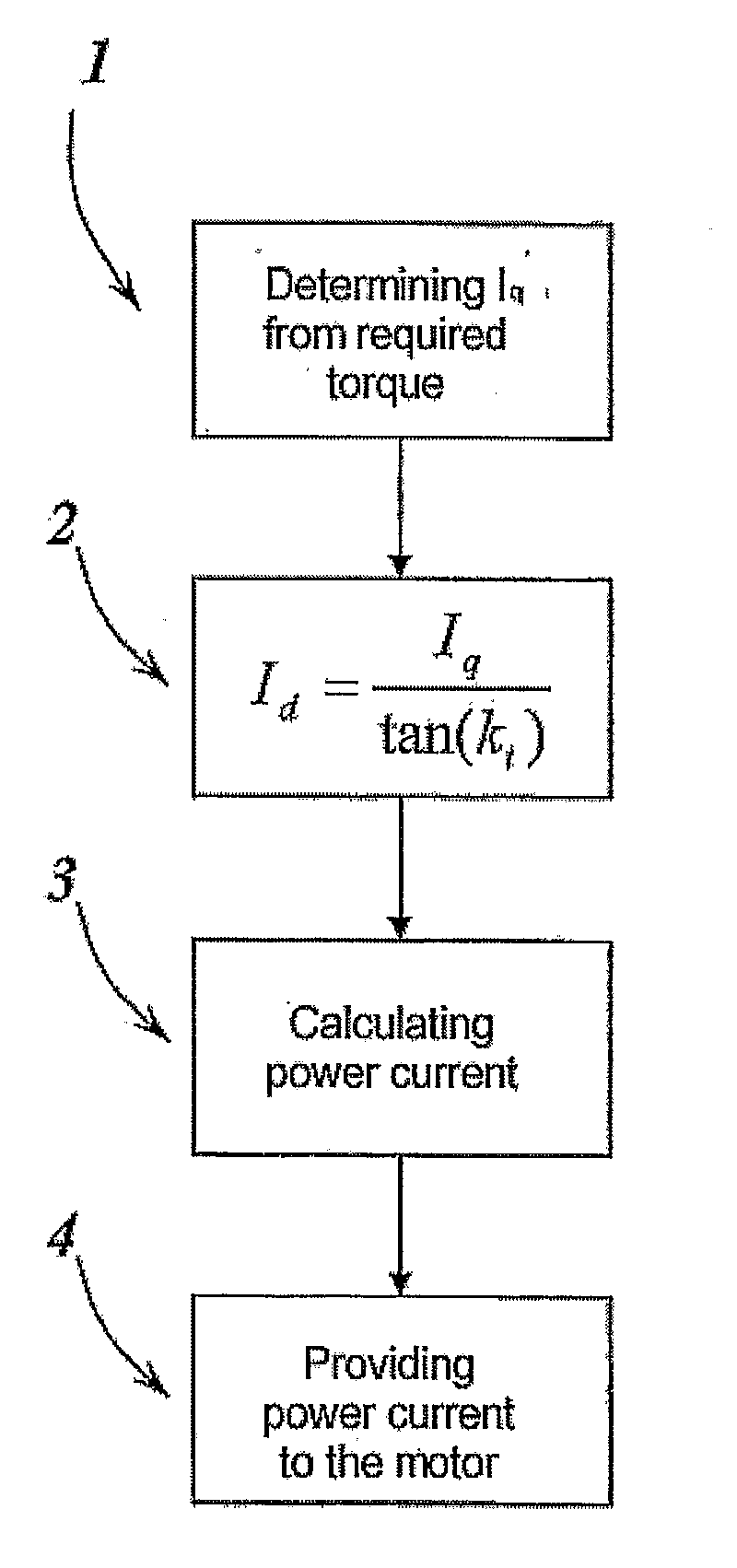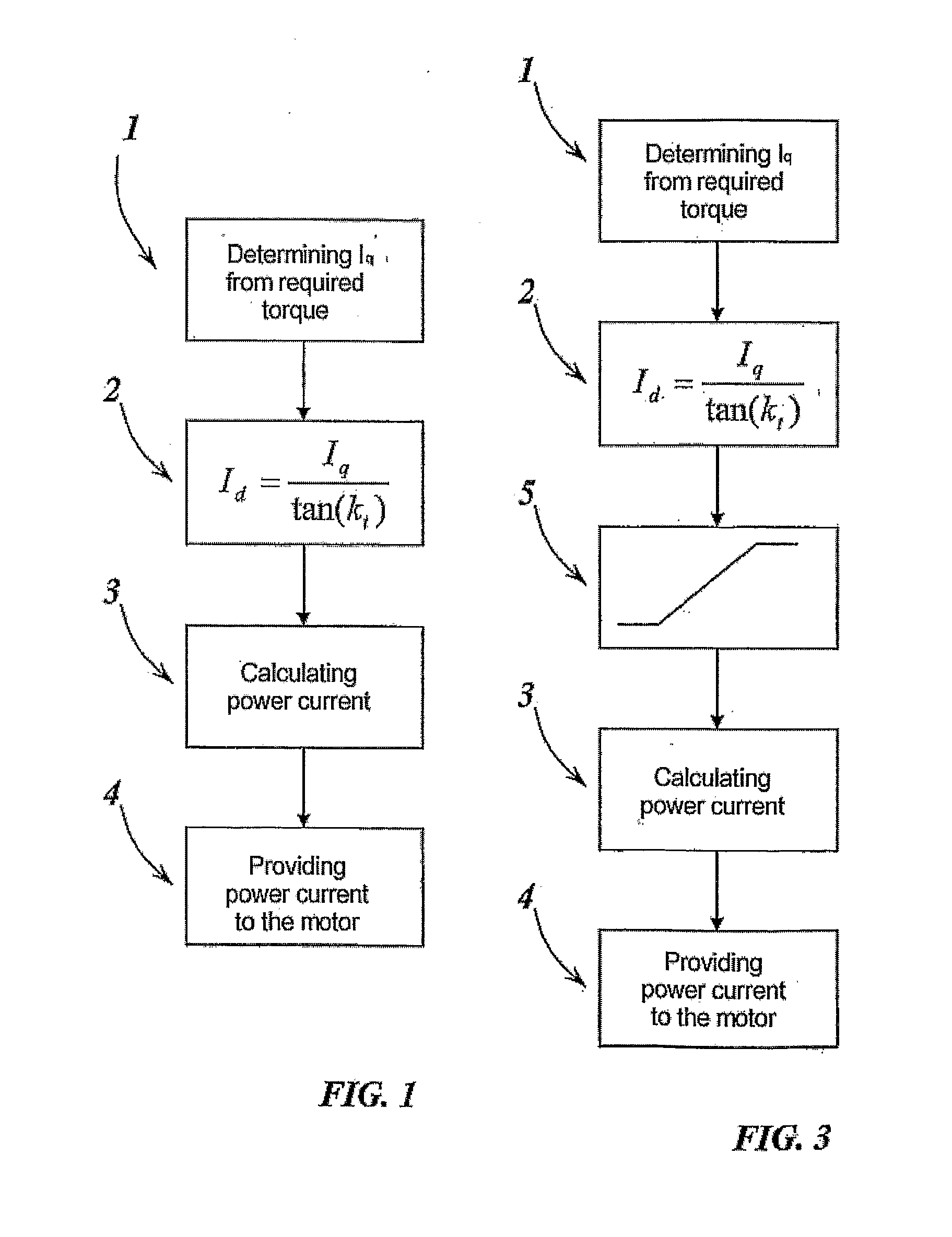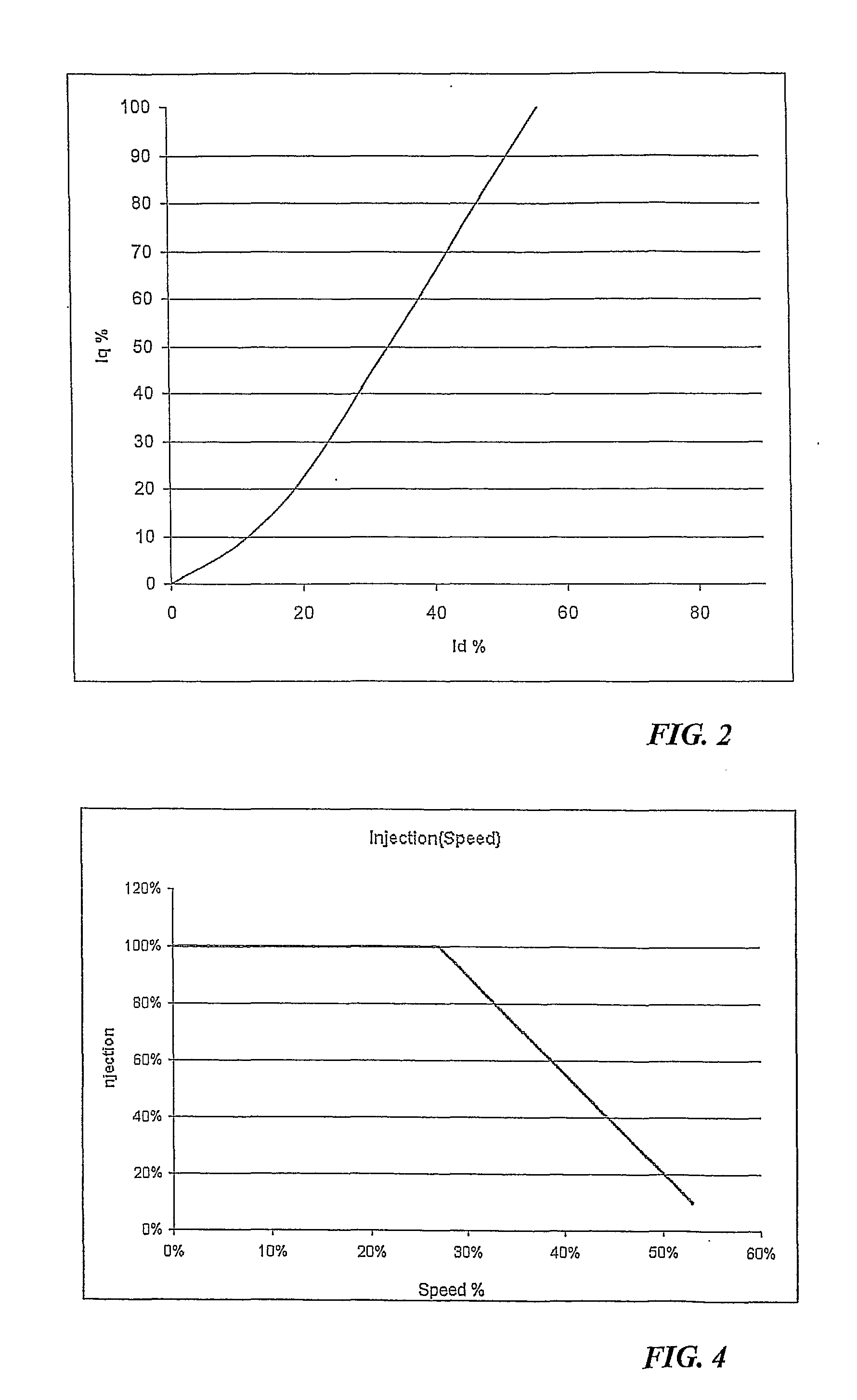Method for controlling a motor
- Summary
- Abstract
- Description
- Claims
- Application Information
AI Technical Summary
Benefits of technology
Problems solved by technology
Method used
Image
Examples
Embodiment Construction
[0040]Referring to FIG. 1, there is described a method for controlling a motor by a vectorial technique and an inverter.
[0041]As mentioned above, the use of a vectorial technique allows control of a general motor as if it were a DC motor, with all advantages deriving therefrom. Therefore, the invention described herein will be related to a general motor, even when it is specifically applied in the control of synchronous reluctance motors.
[0042]The method described herein comprises a first step, designated by numeral 1, where the value of the quadrature current Iq is determined. As is known and mentioned hereinabove, this current is responsible for the mechanical torque delivered by the motor. Once the load and the torque to be delivered by the motor are known, the quadrature current Iq is determined.
[0043]In a later step, designated by numeral 2, the direct current Id to be supplied to the motor is determined by the equation:
Id=Iqtan(kt)
wherein kt is the phase of the current, which ...
PUM
 Login to View More
Login to View More Abstract
Description
Claims
Application Information
 Login to View More
Login to View More - R&D
- Intellectual Property
- Life Sciences
- Materials
- Tech Scout
- Unparalleled Data Quality
- Higher Quality Content
- 60% Fewer Hallucinations
Browse by: Latest US Patents, China's latest patents, Technical Efficacy Thesaurus, Application Domain, Technology Topic, Popular Technical Reports.
© 2025 PatSnap. All rights reserved.Legal|Privacy policy|Modern Slavery Act Transparency Statement|Sitemap|About US| Contact US: help@patsnap.com



